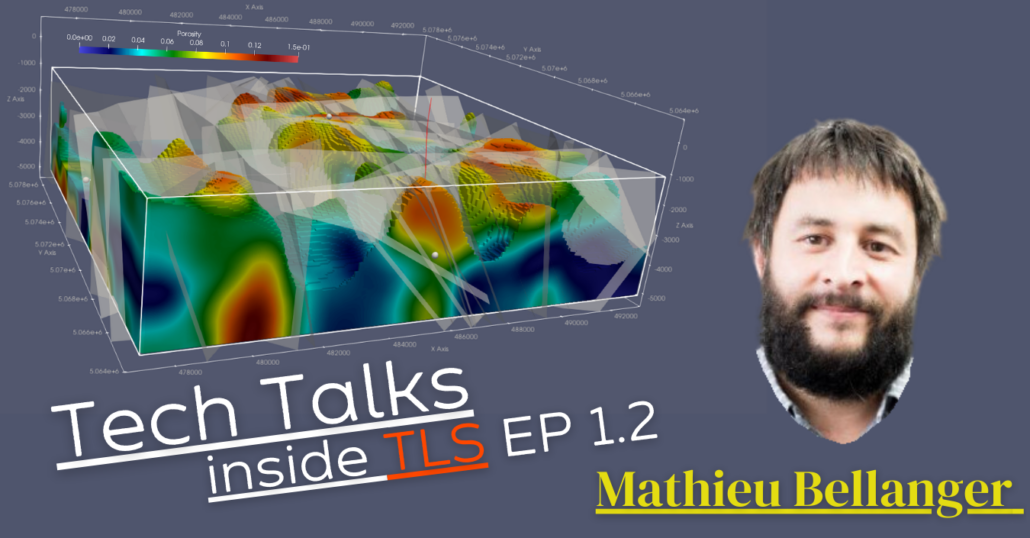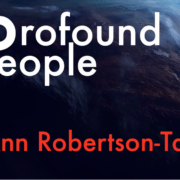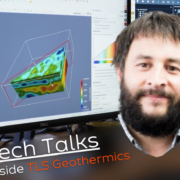“TLS Tech Talks” Podcast Ep. #1.2
Secrets of a Next-Gen Geothermal Exploration Company

How do we identify the POROSITY & DURABILITY of a geothermal hydrothermal resource 6000 feet below the Earths surface?
You are tuned in to “TLS Tech Talks”, behind-the-scenes access to our AI-enhanced exploration tool development.
Part 2 of this episode we go deeper into the technical side of our geophysical tools. How is it possible to identify durability of a hydrothermal source? What do Legos and Python have in common?
Thank you for subscribing & traveling with us as we explore tales of perseverance, innovation, and the pursuit of truly sustainable energy solutions.
Subscribe & stay tuned as we go deeper into the development of Exploration, Development and Production of geothermal energy.
Below you will find the complete transcript from Episode 1.2 :
Rusty: Hey, welcome back to TLS Tech. Talks with Mathieu Bellanger. This is the continuation form episode 1.1… presenting geothermal clean energy exploration techniques.
Mathieu: High permeability allows for efficient fluid flow within the wells. The amount of heat you can extract depends not just on the temperature but also on the mass of fluid you can extract per unit of time. In highly permeable areas, you can extract significant quantities of fluid, which increases the amount of heat you can harness. But, you must manage the flow using pumps and maintain low pressure in the reservoir to avoid causing damage to the rock structure.
The injection index and production index are crucial parameters in this process. They link the pressure inside the system to the fluid flow rate achievable in the wells. For a system to be economical, you often need these indicators to be above certain levels.
My work involves identifying such systems underground, even in the absence of surface manifestations like springs or volcanoes. The workflow we’ve developed at TLS is about exploring these systems and determining their economic viability. This approach is quite different from traditional methods used in the 2010s, which often relied on surface manifestations. We focus on crystalline rocks, a medium that wasn’t well-explored due to the lack of oil and gas resources. We’re looking to demonstrate the presence of geothermal resources in granite or crystalline rocks within fault zones through deep drilling projects in France.
Rusty: We’ve tried this approach in France and are working on it in the US, specifically in places like Buffalo Valley, you must be quite excited?
Mathieu: Absolutely, I’m very excited. The Basin and Range, from a geological perspective, is fascinating with significant mass transport and energy distribution. There’s a lot of energy potential at relatively shallow depths in Buffalo Valley. We have had to adapt our techniques slightly, considering it’s more sedimentary compared to our usual focus on crystalline rocks. We’ve adjusted our workflow accordingly.
Rusty: Could you elaborate on how you develop these 3D pictures of underground resources?
Mathieu: Certainly. In our exploration, we aim to create 3D images of the underground, which we do using various geophysical tools combined with geological knowledge. Although wells are expensive, we can still gather valuable data. We primarily use methods like gravimetry, ambient noise tomography, and seismic ambient noise recording. These methods help us record variations in electrical and magnetic fields over time, which are linked by an impedance tensor mostly dependent on the rock’s conductivity underground.
By recording these variations, we can infer the underground’s electrical conductivity or resistivity. This approach gives us insight into the underground’s properties. However, interpreting these readings is challenging as multiple configurations can explain the data we record. We use joint inversion to combine petrophysical properties, reducing the number of possible models that explain our data.
Additionally, as a geologist, I’m interested in converting these physical properties into geological properties like lithology, temperature, porosity, and permeability. This conversion is crucial for understanding the potential for geothermal energy extraction.
Rusty: So, you’re developing tools that differ from traditional oil and gas exploration tools?
Mathieu: Yes, we’re exploring different environments than what’s typically sought in oil and gas exploration. Our tools are designed to identify hot underground locations suitable for geothermal energy. This approach differs significantly from traditional methods, which often miss potential geothermal sites.
Most existing geothermal power plants are located near surface manifestations like springs, but our methods allow us to explore areas without such surface indicators. Jim Faulds’ work from Reno University shows that most geothermal systems are hidden with no surface manifestations. These systems account for a significant portion of geothermal resources. Our tools are tailored to identify these hidden systems, allowing us to explore geothermal energy in areas previously overlooked.
Rusty: So, your tools are specifically oriented towards the unique requirements of geothermal energy exploration?
Mathieu: Our tools are designed with the specific challenges and objectives of geothermal energy exploration in mind. We’ve developed them to adapt to different geological environments and to address the particular needs of identifying viable geothermal resources.
Rusty: We’re talking about geometries and underground properties. Could you explain more about the tools you use?
Mathieu: Absolutely, our work often revolves around understanding the geometry of faults and various underground properties. We’ve developed tools that help us manipulate spatial data, as geology is largely concerned with geometric problems. We’ve also been working on joint inversion methods, which I mentioned earlier, to convert physical properties into more geologically relevant information, like permeabilities and temperatures.
Rusty: So you’re using Python for programming these tools?
Mathieu: Yes, we use Python, a versatile scripting language, to develop our tools. It’s like having a vast array of bricks, similar to Legos, allowing us to build new things. We use Python for various tasks like data manipulation, visualization, cleaning, transforming, and even 3D modeling or simulations.
Rusty: That sounds like a comprehensive approach. Now, about Buffalo Valley, our most advanced project, what are the key aspects you focus on, especially concerning underground water sources?
Mathieu: In Buffalo Valley, and generally at depths greater than 1 kilometer, the water is quite different. In hydrothermal systems, the water is salt-rich, making it unsuitable for direct consumption. Our focus is on deep, hot waters, different from surface waters. To confirm the presence and qualities of these deep water sources, we look at various factors. For instance, in Buffalo Valley, we’ve identified water at depths between 1,500 to 2,000 meters, which likely originates from even deeper, around 6,000 meters.
Rusty: How do you ensure sustainability and environmental safety in these operations?
Mathieu: We operate in closed systems, using both production and injection wells. The geothermal fluids are never exposed to the environment, ensuring no depletion of the underground resources. We focus on reinjecting the extracted fluids back into the ground after heat extraction, which is crucial for maintaining the system’s sustainability.
Rusty: So, understanding the sustainability aspect is key. How about the durability of the heat source?
Mathieu: In Buffalo Valley, there’s a high probability of magmatic systems contributing to the heat. However, it’s important to note that geothermal systems can be viable even without magmatic involvement. The heat can originate from the radioactivity of the crust or from deeper asthenospheric flows. These deep, hot materials, often related to plate subduction processes, are a significant heat source. This approach allows us to tap into geothermal energy in various geological settings, not limited to areas with magmatic activity.
Rusty: Let’s discuss the source of geothermal heat. How do you understand the dynamics of mass and energy transport within the crust?
Mathieu: The heat source for our geothermal projects comes from various deep-earth processes. For example, in areas like the Basin and Range, we have mass and energy transport due to geological activities over long periods. These processes facilitate the transport of heat vertically through the crust. It’s this heat that we aim to tap into and extract.
Rusty: It sounds like understanding the history and dynamics of an area is crucial. Could you elaborate on how you evaluate the potential of a geothermal site?
Mathieu: The longevity of thermal circulation is a key factor. For instance, whether the fluid circulation has been ongoing for thousands or millions of years significantly impacts the potential of a site. In the Basin and Range, we’ve identified various periods of material and energy flows, making it an intriguing area for geothermal exploration.
Rusty: Thank you Mathieu. For those of you listening in, thank you for joining us, please subscribe and stay tuned for our 3rd segment with Mathieu Bellanger.





